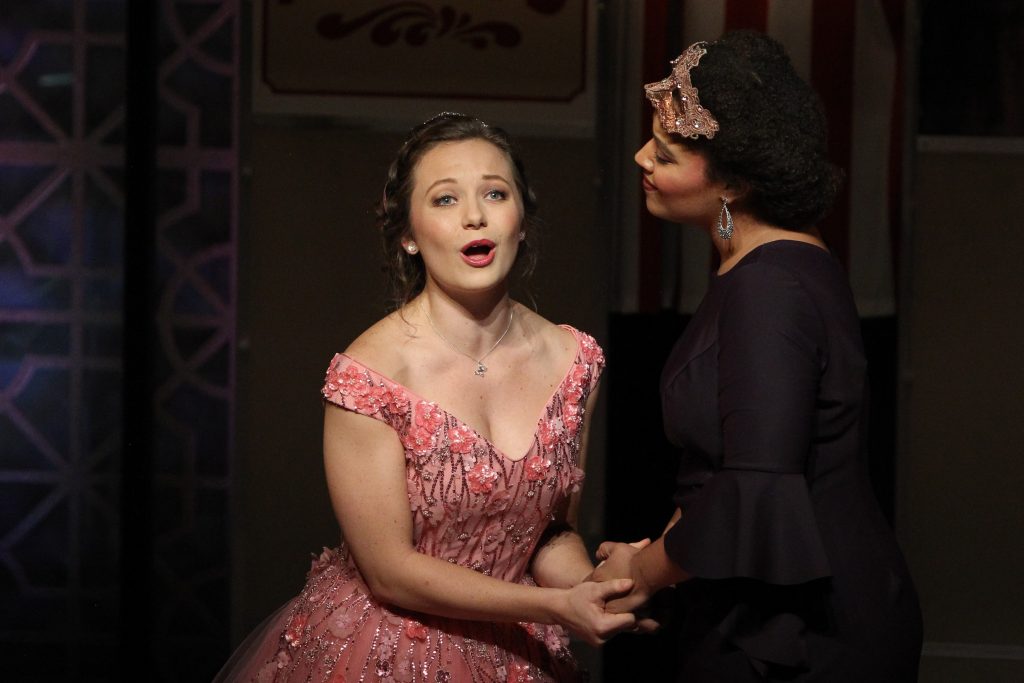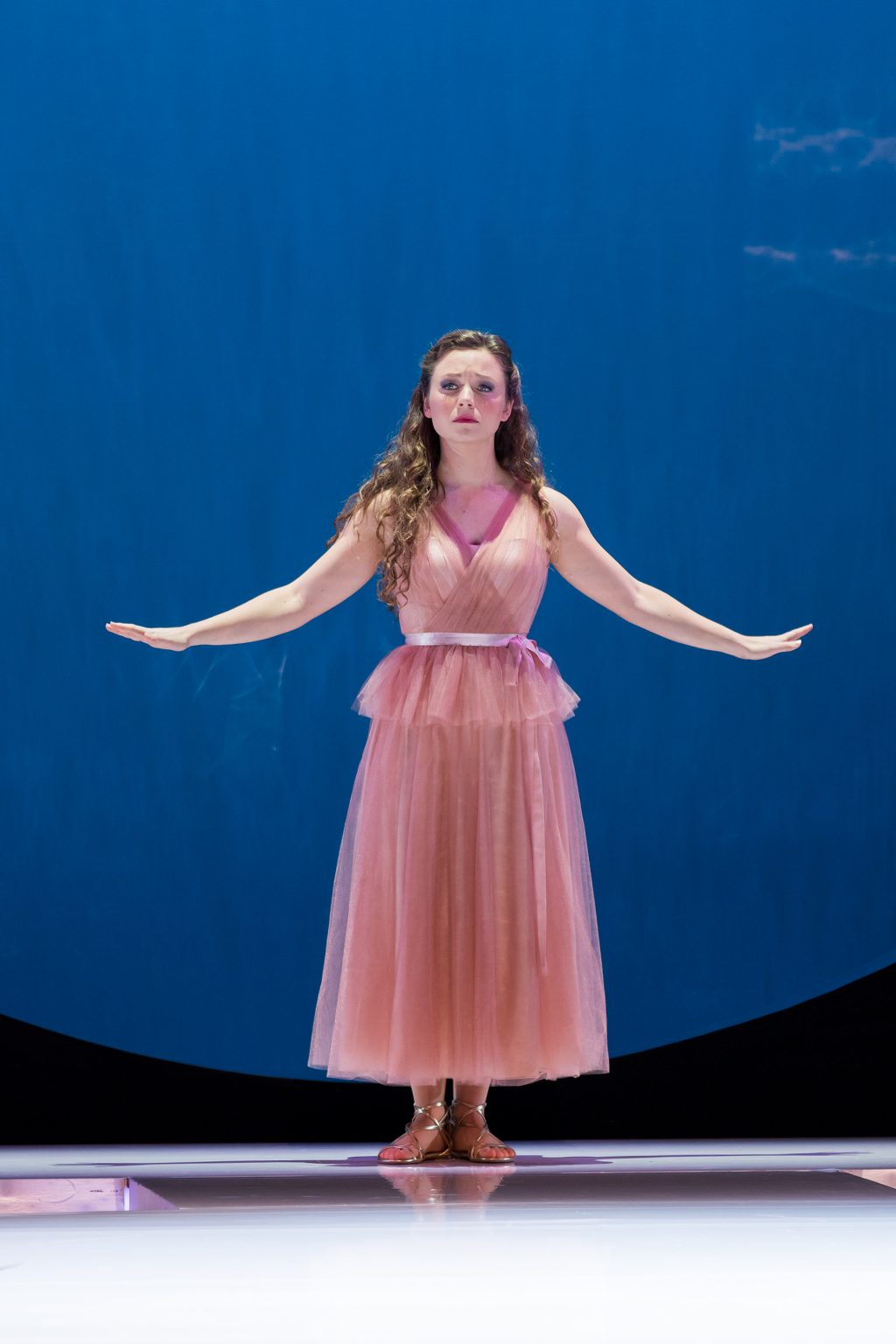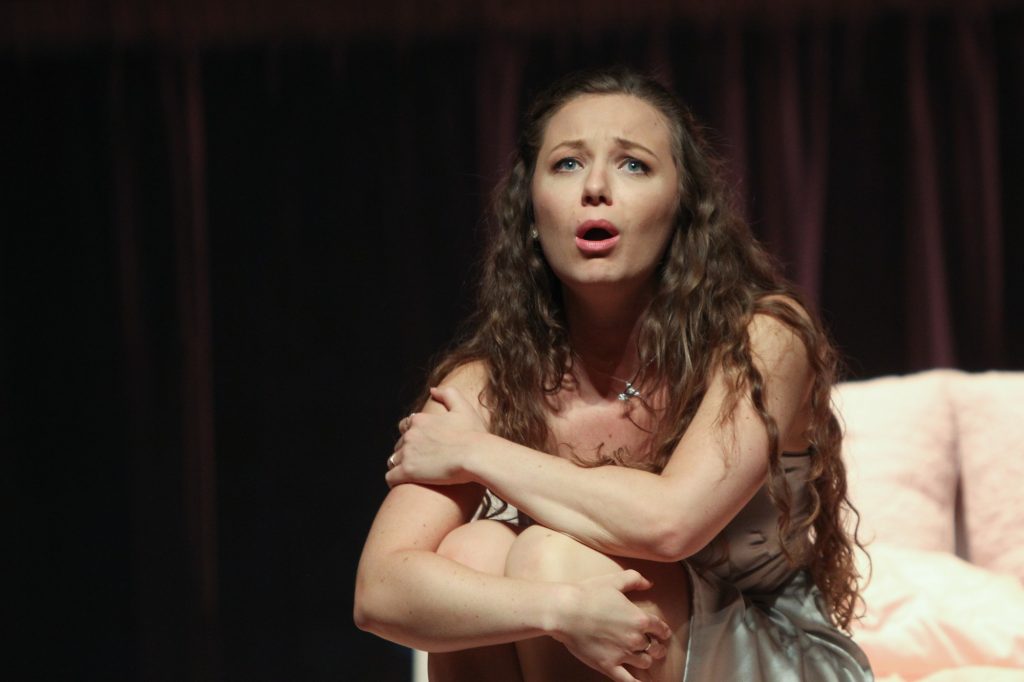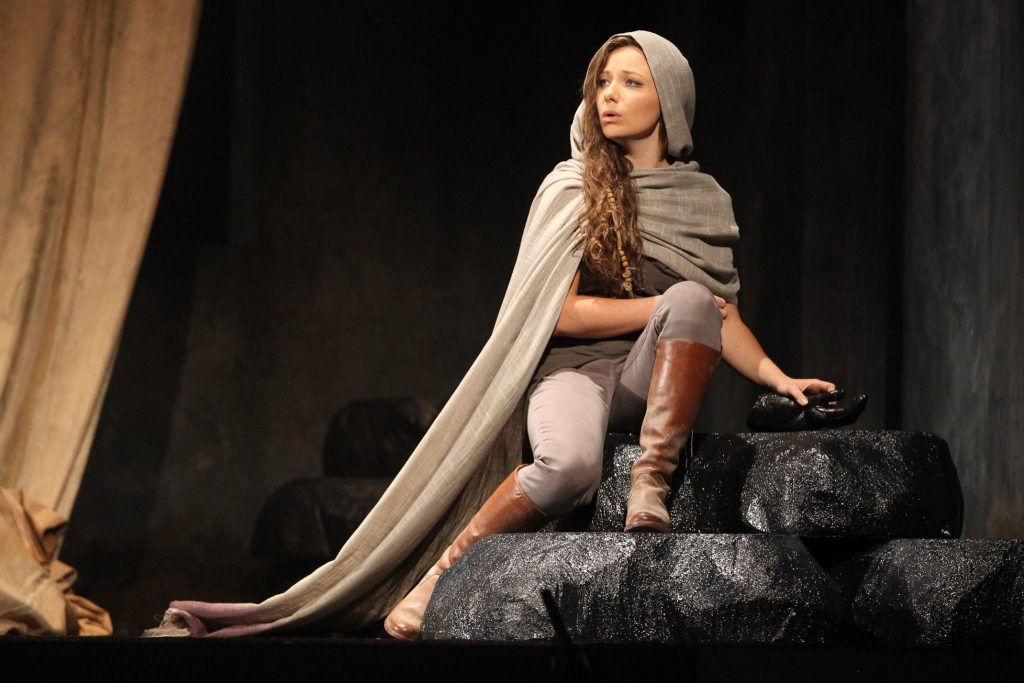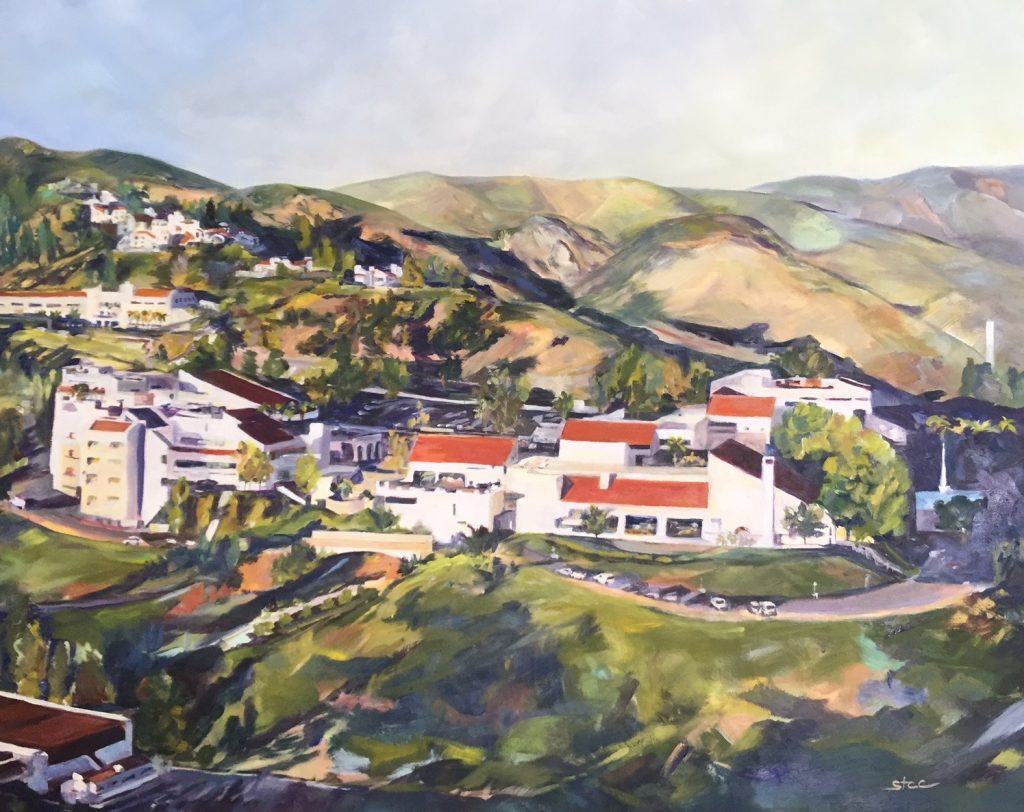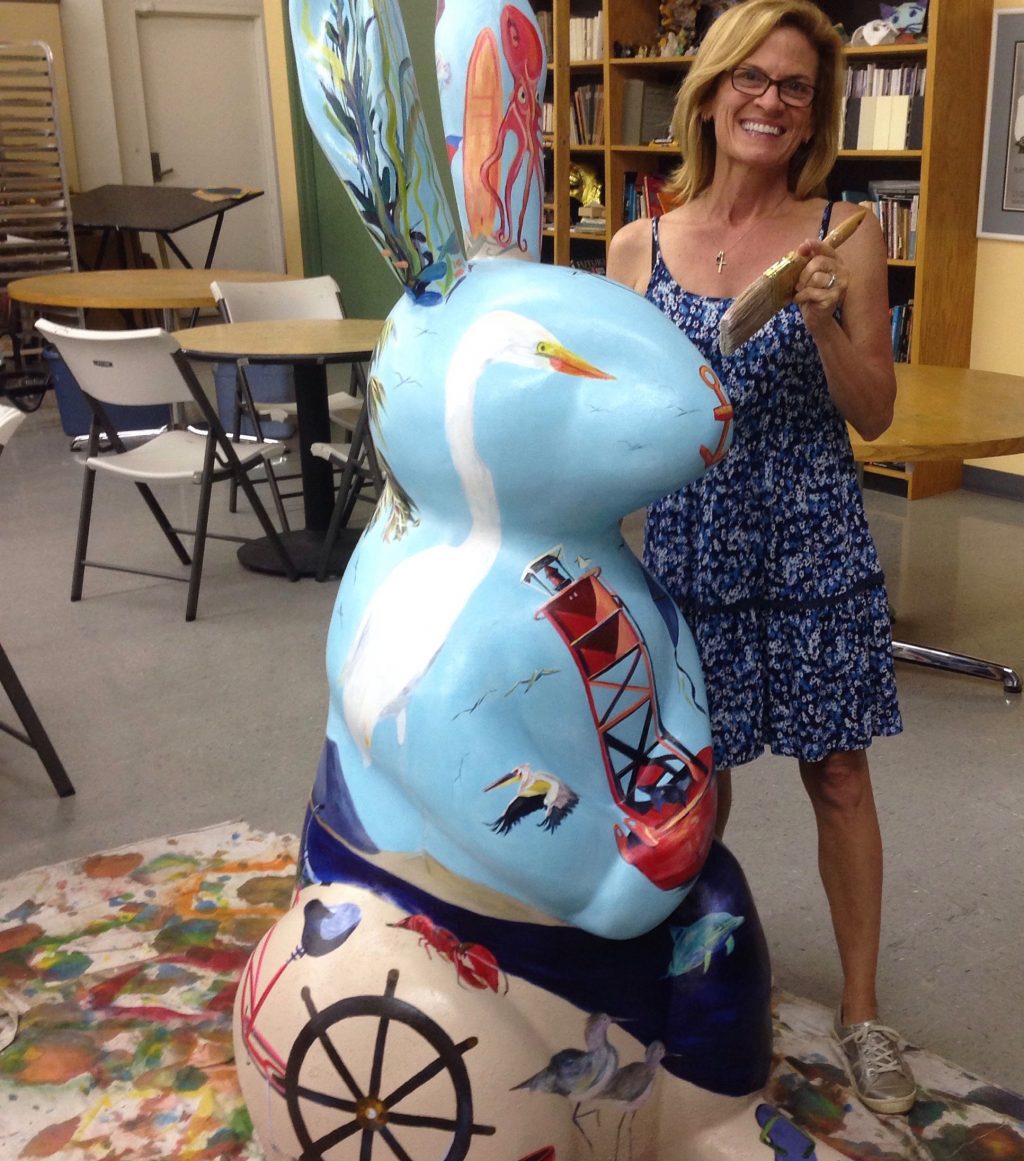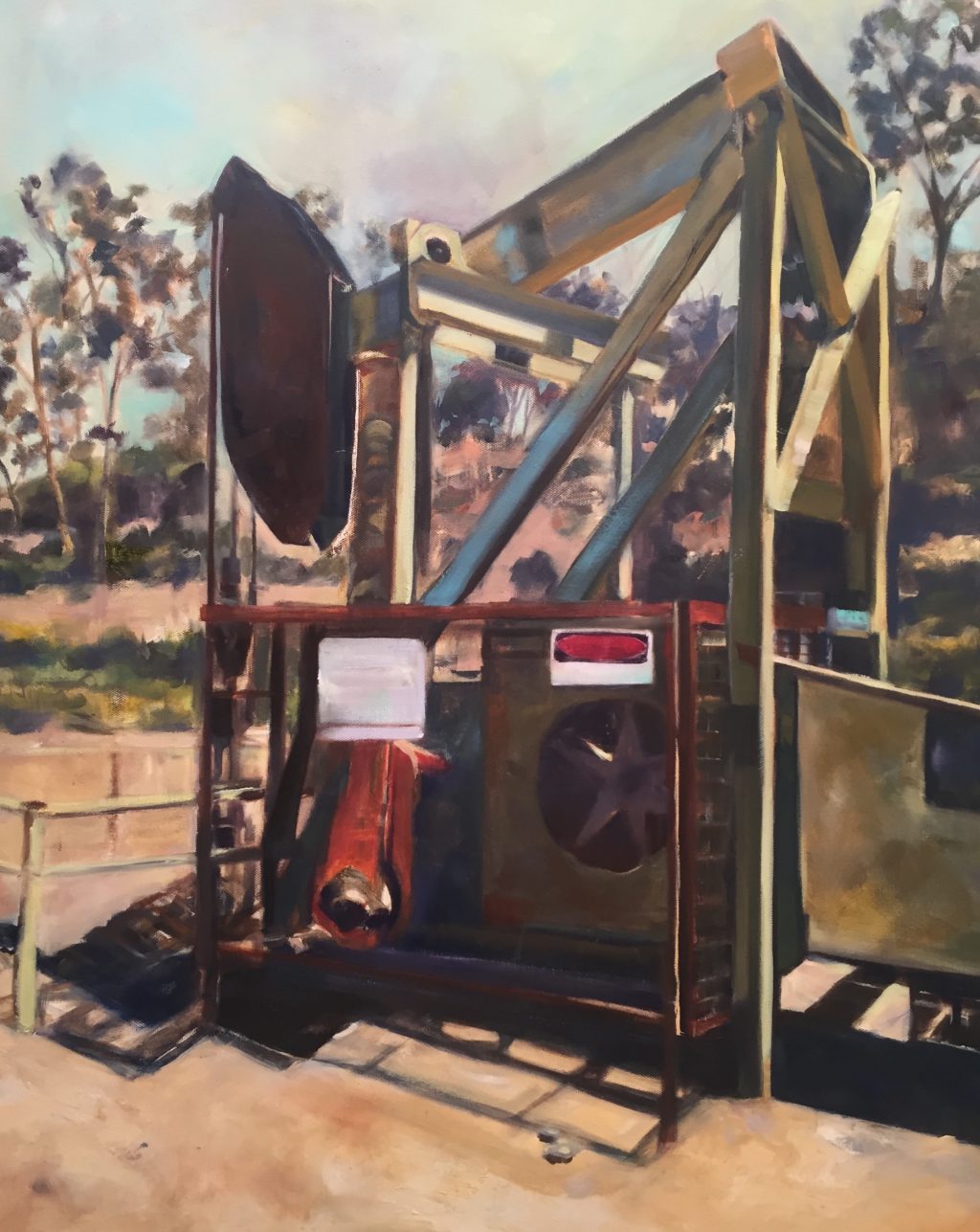Photo by Kaelin Mendez
What does success mean to you?
There is no exact answer. One might define it as financial stability, happiness or an opportunity for intellectual challenge. Others might equate it to their children’s happiness. When it comes to the art world, success may be more difficult to define.
“Art, broadly construed, is the creative spark that is within each person that desires to communicate with others,” said Bradley Griffin, divisional dean of Fine Arts. “The artist is someone who has a particular gift for communicating that spark.”
The unpredictable nature of the art world means sometimes artists fall short of their goals, are denied artistic freedom or lose exhibition space. Perhaps this is what makes the journey of the artist more interesting to watch.
“I find many artists like myself feel grateful when they make a living working as a professional artist,” said Shannon Celia, an award-winning fine artist and 1998 Pepperdine alumna. “Some may create for a particular show or museum tours, while others prefer to make their living teaching or participating in plein air events for example. Some feel more free maintaining another career and creating art for the pure joy of it. Many do all of these things at different stages of their art journey.”
The reality is that most artists will not sell a million records or win a major award. Success in art is more personal than quantifiable.
“Part of the joy and part of the struggle of being an artist is that you continually go back to yourself,” Griffin said. “You are your own source of inspiration and your own measure of success.”
Ultimately, art is just as much about understanding oneself and the surrounding world as it is about storytelling.
“The drive that you have to keep going and to keep pursuing what it is that you’re passionate about ultimately is going to become your measure of success,” Griffin said. “‘Have I been able to tell the story that I want to tell?’”
Success in opera
Alumna Madison Leonard sings “Juliette” in “Roméo et Juliette” at Wolf Trap Opera. Photo by Kim Witman.
Madison Leonard is a professional singer who recently won the Metropolitan Opera Competition.
Her journey began with finding her love for music when she decided to major in vocal performance at Pepperdine.
“I had an amazing voice teacher — Dr. Henry Price,” Leonard said. “He really inspired me to start to listen to classical music, and I had never been interested in it, really. He told me he heard potential in my voice to sing that kind of music and encouraged me to look into it and see live performances.”
A well-rounded student, she was also involved with the Pepperdine Graphic, participated in the Pepperdine Improv Troupe (PIT), studied in Buenos Aires and attended the Heidelberg summer music program.
Leonard graduated in 2014 and went on to pursue a master’s degree in voice and opera from Northwestern University.
Afterward, she spent a year auditioning and freelancing all over the country. She received many rejection letters until one day she was offered a place in a young artist program at the Washington National Opera, an apprenticeship program in D.C. for opera singers.
Leonard sings “Morgana in Alcina” at Washington National Opera. Photo by Scott Suchman.
Leonard sings “Juliette” in “Roméo et Juliette” at Wolf Trap Opera. Photo by Kim Witman.
“There were so many moments where I just tried to keep my head down and focus on the next task ahead of me in the skill I wanted to develop,” Leonard said. “I had no idea if things were going to pan out but things start to thread together. Little opportunities became bigger opportunities, and things have grown in ways I really could not have imagined.”
Today, Leonard is doing professional contracts as she works to support herself as a singer.
“You have to trust the voice inside you that says you have something to share with the rest of the world,” Leonard said. “Regardless of what kind of artist you are, it’s about creating something. You have to see value in the thing that you’re creating in order to share it with other people.”
For Leonard, part of being an artist is having other people critique her craft.
“You have to learn what kind of criticism is going to be helpful in growing your art and what criticism is totally unhelpful and can go in one ear and out the other,” Leonard said.
She calls her path “more of a squiggle of a journey than a linear line,” and success for Leonard looks like growth and contentment.
The thing about music and art in general is perfection doesn’t really exist, which can be kind of maddening,” Leonard said. “It means there’s never an end point for your work, so success therefore can’t be some kind of ending place. Success means you continue to grow and look back and see what you’ve accomplished and be content with that.”
While the popularity of opera is a concern with the abundance of streaming entertainment options, Leonard challenges people to just see one opera or one show instead of dismissing it as stuffy and boring.
“I have to believe there’s something so exciting about live music that people will still be drawn to it,” Leonard said.
Ultimately, Leonard views music and art as one and the same.
Leonard sings “Ilia” in “Idomeneo” at Wolf Trap Opera. Photo by Kim Witman.
“Art is such a gift given to us humans,” Leonard said. “We’re the only animals that we know of that create just for fun, to express ourselves. Whether that’s painting, dance, theater, music, gosh, there’s so many ways to express human feelings.”
Leonard is looking forward to debuting new roles and taking on more music and acting challenges. Currently, she is in Seattle practicing for “Rigoletto,” the Seattle Opera’s summer performance.
Success in scenic design
Diggle, as he is professionally known, is a young scenic designer who has taken his talents from his hometown of Puyallup, Washington, all across the country to the Big Apple.
A scenic designer is an artist who creates the sets for a theatre production, combining the visions of the playwright and director into an idea on paper or on a computer that is then rendered into a 3D model before the actual construction of the set.
Since receiving a bachelor’s degree in theatre arts from Pepperdine in 2013 and a stage design master of fine arts degree from Southern Methodist University (SMU) in Dallas, Diggle has worked with Tony Award-winning designers and directors on many Off-Broadway productions.
“Pepperdine gave me my voice, [and] SMU definitely gave me those real-world skills that I would actually need in order to do scenic design,” Diggle said.
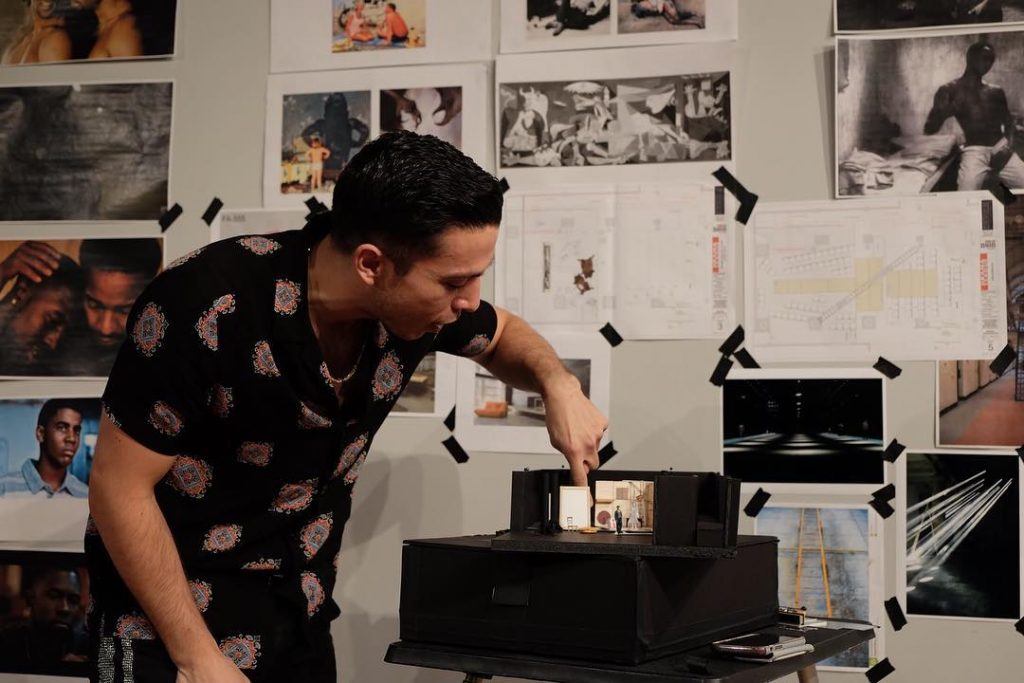
Alumnus Diggle presents a model for one of his five shows at the Drama League’s DirectorFest. Photo by Julie Solomon.
In the three short years since he moved to New York City, Diggle has worked with the likes of David Korins (Broadway designer of “Hamilton” and set designer for Lady Gaga), Anna Louizos (Broadway designer of “School of Rock”) and Clint Ramos (Broadway set and costume designer).
Diggle is currently an associate designer for Ramos — an experience he calls “amazing.” The pair recently closed their ninth show together.
“Ramos is a gay designer of color and I am a very proud gay designer of color,” Diggle said. “He’s paving the way as a designer … That’s a legacy that I want to continue forward.”
Working as an associate for Ramos provides Diggle with valuable experience as he simultaneously works on his own designs, including five shows that he recently completed for the Drama League’s DirectorFest at the New Ohio Theatre in New York City. Diggle cites taking advantage of opportunities and networking as essential in the field.
“Those are people who I’m going to end up working with as I climb the ladder,” he said. “Networking is all about keeping up the relationships.”

Diggle examines this larger-than-life set for the show “Wild Goose Dreams” at The Public Theater in Lower Manhattan, New York City. Diggle was the associate scenic designer for the show while Clint Ramos was the scenic designer. Photo by Andrew Kluger.
Beyond networking and marketing oneself on social media, scenic design requires a distinct set of skills with computer programs, such as Vectorworks, Photoshop, model-making, rendering and 3D printing. Diggle said the process is what initially sparked his passion.
“It was just taking an idea and then putting it on paper and then taking that idea that was on paper and turning it into a physical form,” Diggle said. “It’s like this constant high that you get in every production that you do.”
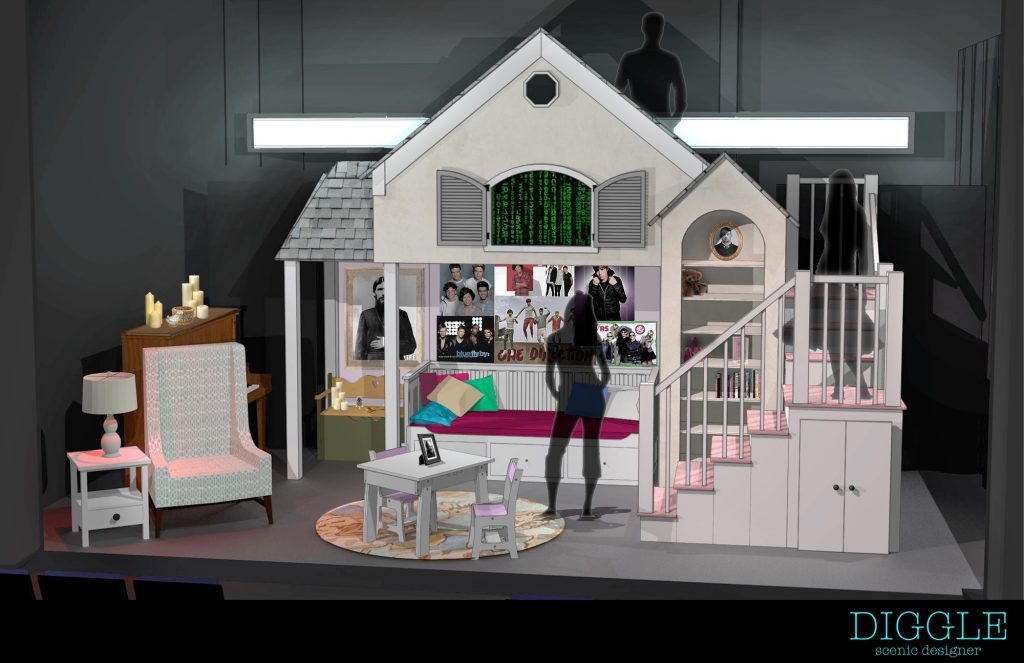
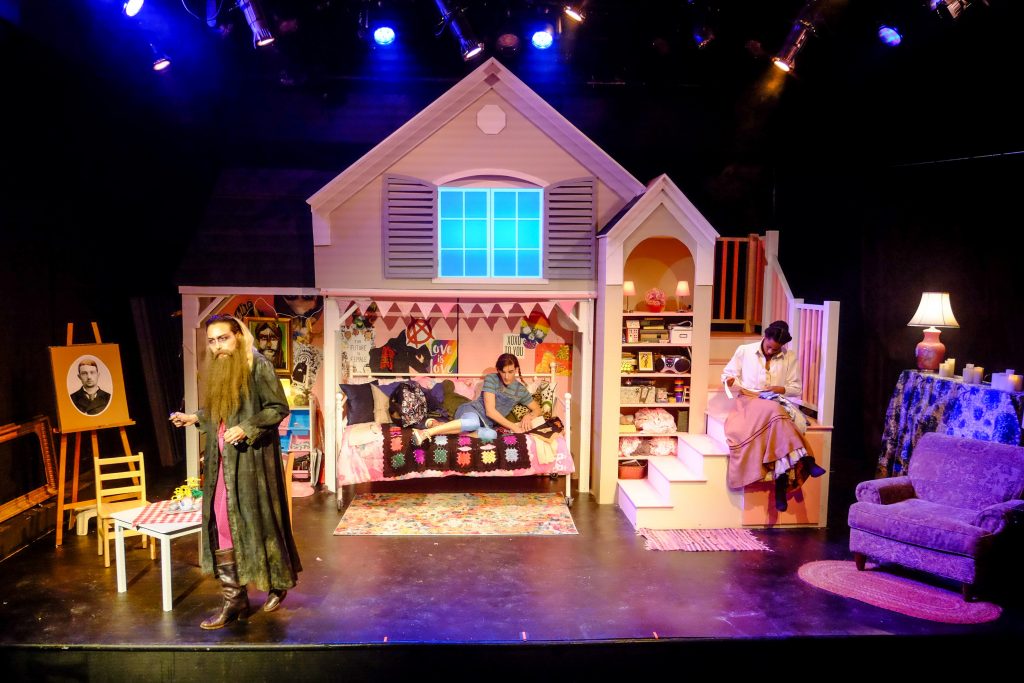
Diggle brought this rendering (top) to life in the show “Red Emma and the Mad Monk” at the The Tank in New York City (bottom). Rendering courtesy of Diggle, second photo by JJ Darling.
After initially expressing no interest in theatre, Diggle’s mother forced him to attend the local community theatre in order to bond with his brother, an aspiring actor. Diggle attempted various backstage roles throughout high school before he had a chance to design his first set at the community theatre at 17. From then on, Diggle realized scenic design was what he “had to do for the rest of [his] life” and chose Pepperdine specifically for its theatre program.
“Theatre became my life, especially because most of the design students are on scholarship,” Diggle said. “It takes a lot of your life to do that because you’re working on every show, on every production.”
Now, he works on designs for as many as 10 shows at once in the central hub of the United States’ theatre scene: New York.
“I am successful because I’m fully employed doing what I love,” Diggle said. “Scenic design is my full-time job.”
Diggle acknowledges that scenic design is not for the faint of heart, and he advises aspiring artists to recognize whether their craft is their true passion.
“You have to really love theatre,” Diggle said. “It’s not a nine-to-five job and you don’t have the weekends off. I never stop thinking about what I’m doing.”
Success in acting
Brittany O’Grady plays in FOX’s “Star.” Photo by Kaelin Mendez.
Brittany O’Grady is a rising star in the acting industry, shining on the show “Star” on FOX and previously on “The Messengers” on The CW Network.
A former live theatre actress, O’Grady attended Pepperdine for three semesters between 2015 and 2016 but only finished two, eventually dropping out to pursue what has already been a highly fruitful career.
“I got a call that I booked a show on The CW, so instead of going to NSO, I was in Albuquerque for the whole first semester of college,” O’Grady said. “I came [to Pepperdine] in the spring … Then I booked ‘Star,’ and I haven’t really looked back.”
While growing up in Virginia, O’Grady worked on commercials and ad campaigns in addition to live theatre. She even had the chance to perform a musical version of “A Christmas Carol” at The White House for President George W. Bush and military families. However, she graduated high school early and moved to Los Angeles to pursue film rather than stage performance.
“Theatre is definitely my first and major love but I was really inspired by the movies I started watching in high school,” O’Grady said. “I loved the finished product, and I loved the stories that were told.”
The 2000 comedic drama “Malèna” with Monica Bellucci, the 1999 drama “Girl, Interrupted” with Winona Ryder and Angelina Jolie and even the 2012 action film “The Hunger Games” were some of the movies that inspired her change in focus, O’Grady said.
After studying abroad in Shanghai and briefly working on Pepperdine theatre‘s production of “South Pacific,” O’Grady was officially cast as Simone Davis on the musical drama series “Star,” which recently completed its third season. Simone, the youngest of the show’s musical group, spends much of the first season in rehab before joining the group in the second season.
“I love playing characters drastically different from me,” O’Grady said. “One of the best things about being an actor is telling a story and being able to be convincing and pushing yourself out of a comfort zone.”
Despite the steady role that “Star” provides, O’Grady said the auditions never stop.
“It’s too exhausting to do it if you don’t love it,” she said. “If you’re trying to look for fame, I wouldn’t do it.”
Actors can face criticism, exhausting hours, delayed or cancelled projects, stereotyping and even constant recognition, O’Grady said. However, she loves her work and the opportunities it provides.
“I think there’s little successes in everything,” O’Grady said. “Learning a new skill … winning an award … having a really great professional performance … If it moves an audience, that is success to me.”
The film and television industry in the Los Angeles area is often ridiculed as a place where people hide their true colors but O’Grady sees it differently.
“You’re able to artistically express yourself, have a purpose and hopefully be able to change people’s mind [with acting], ” O’Grady said. “I think that’s really cool. Everyone appreciates the art.”
Success in visual art
Shannon Celia, who works in oil painting, was not sure what she was going to do when she graduated from Pepperdine with a journalism major and an art minor.
But she was excited.
“When I was at Pepperdine, it was some of the most amazing years of my life because it was such an incredible environment to discover painting and looking out at the beautiful Santa Monica mountains and ocean,” Celia said. “I love painting coastal [scenes] and it was such an inspiration.”
This finished commission in oil of the Pepperdine campus is displayed in the Charles B. Thornton Administrative Center. Photo courtesy of Shannon Celia.
Her journey to discover her passion for art took many turns. She grew up in New England and moved to California at 17 by herself on a singing scholarship. She said it was at Pepperdine where she found art.
When she graduated — married and eight months pregnant with her daughter — she was around 30.
“Something amazing happens to a lot of people when they have their first child, and I was so inspired,” Celia said. “I am also a children’s book author. I finished a book after she was born. When you’re a parent, you can’t be really focused because your time isn’t 100 percent your own.”
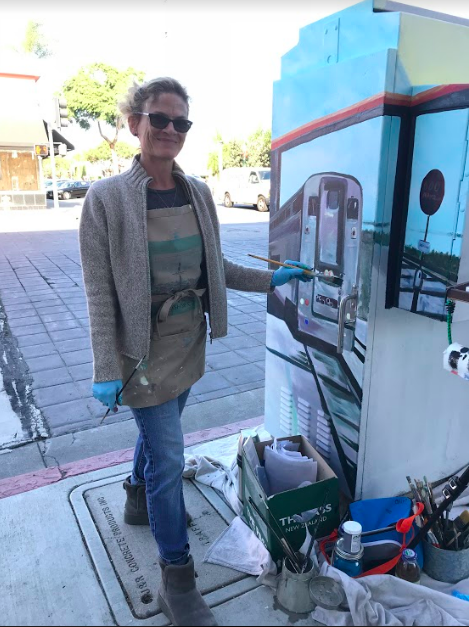
Alumna Celia works on the Utility Box Public Art Project in downtown Oxnard in December 2017. Photo courtesy of Shannon Celia.
Celia mainly does watercolor commissions for people’s homes, which she calls “home portraits,” at her studio in Thousand Oaks. She always viewed art as a career.
“I’m a creative person and I created my whole life and I guess after all these years of painting, I feel so blessed to wake up and paint,” Celia said. “I don’t take that for granted.”
The trickiest part for a self-employed artist, Celia said, is wearing two different hats — creating art but also focusing on marketing, sales and social media.
“I think if you’re self-employed in any capacity you have to be very deliberate,” Celia said. “I enjoy my work very much and I don’t take for granted the fact that if you want to have the career I wanted to, you have to show up for work every day.”
Celia also experiments with artwork outside of her comfort zone.
Celia finishes the varnishing on her “COTTONSAIL” rabbit for the Conejo Cottontail Public Art Project. Photo courtesy of Shannon Celia.
“When you stretch yourself as an artist, I think it affects everything you do,” Celia said. “l’ll paint a 6-foot bunny like the Conejo cottontail, the first public art project in the Conejo Valley, and utility boxes downtown. I thought it was so meaningful because I lived there for decades.”
This year, Celia was awarded her first museum solo show. To prepare for it, she is working on 30 to 40 pieces for the Santa Paula Art Museum, which will showcase her work June 2020.
“I have a year and a half to work on that,” Celia said. “I paint the gritty with the pretty, and that’s exactly what I’m working on. It’s called the ‘Santa Paula Sojourn.’”
For students interested in pursuing art as a career, Celia said there’s value in having a strong work ethic and keeping regular hours.For students interested in pursuing art as a career, Celia said there’s value in having a strong work ethic and keeping regular hours.
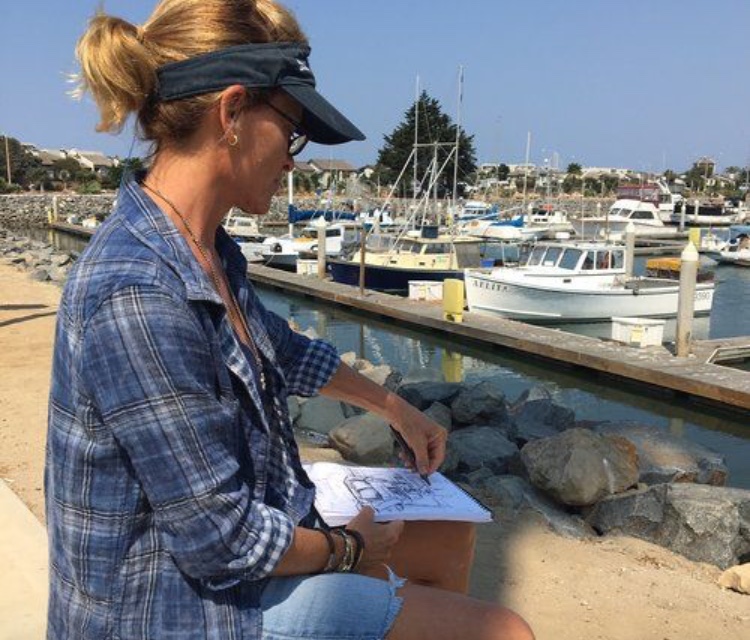
Celia sketches at Channel Islands Harbor. Photo courtesy of Shannon Celia.
“Some people romanticize an art career but creatives kind of have to work even harder sometimes because you have to do all aspects of the business, and that’s the challenging part for some of us,” Celia said. “You have to compartmentalize the different aspects so you reach your goals. Some days, I just work on the business side. In my dreams, I’d rather just paint.”
Follow Currents Magazine on Twitter @PeppCurrents

